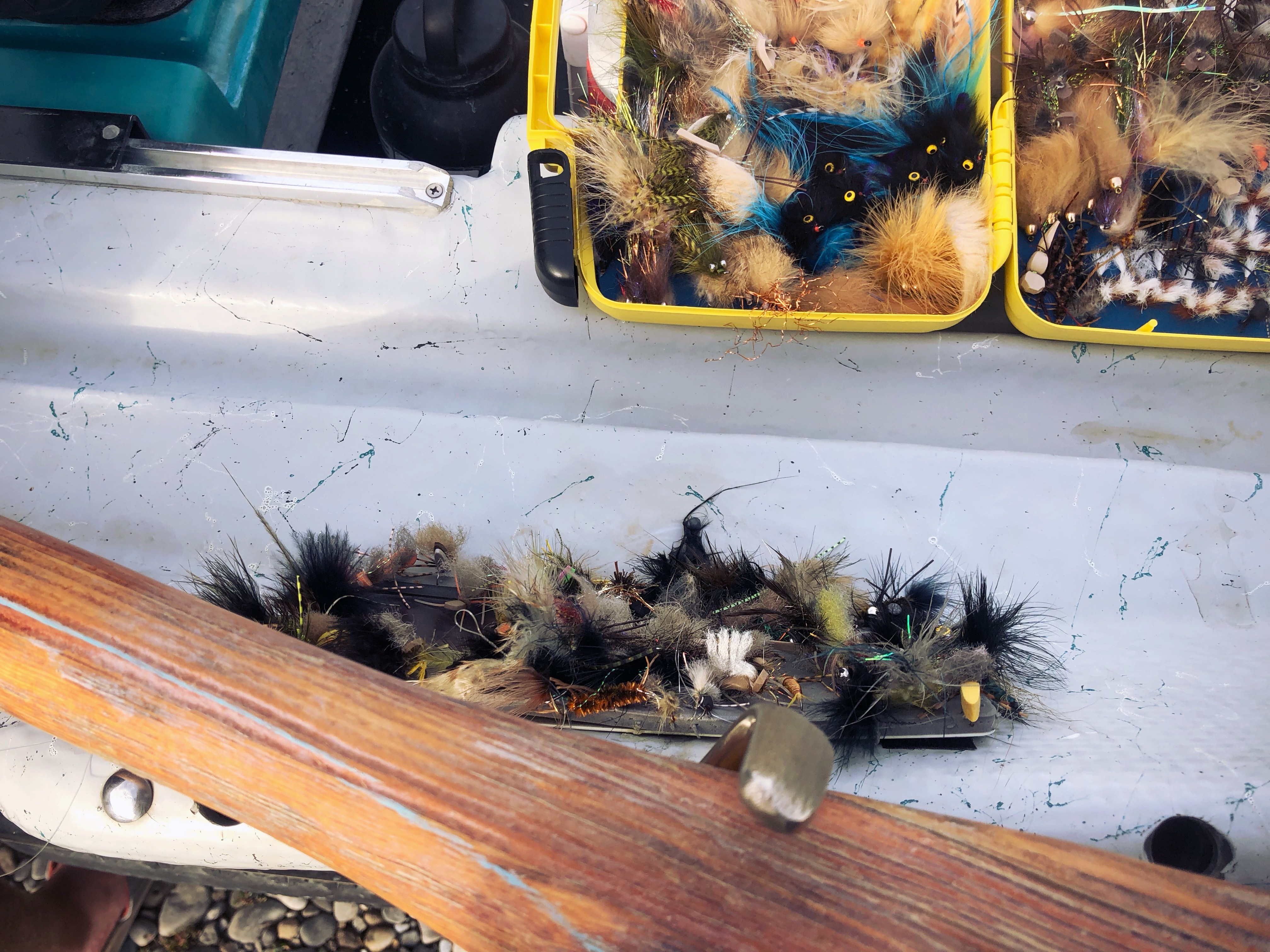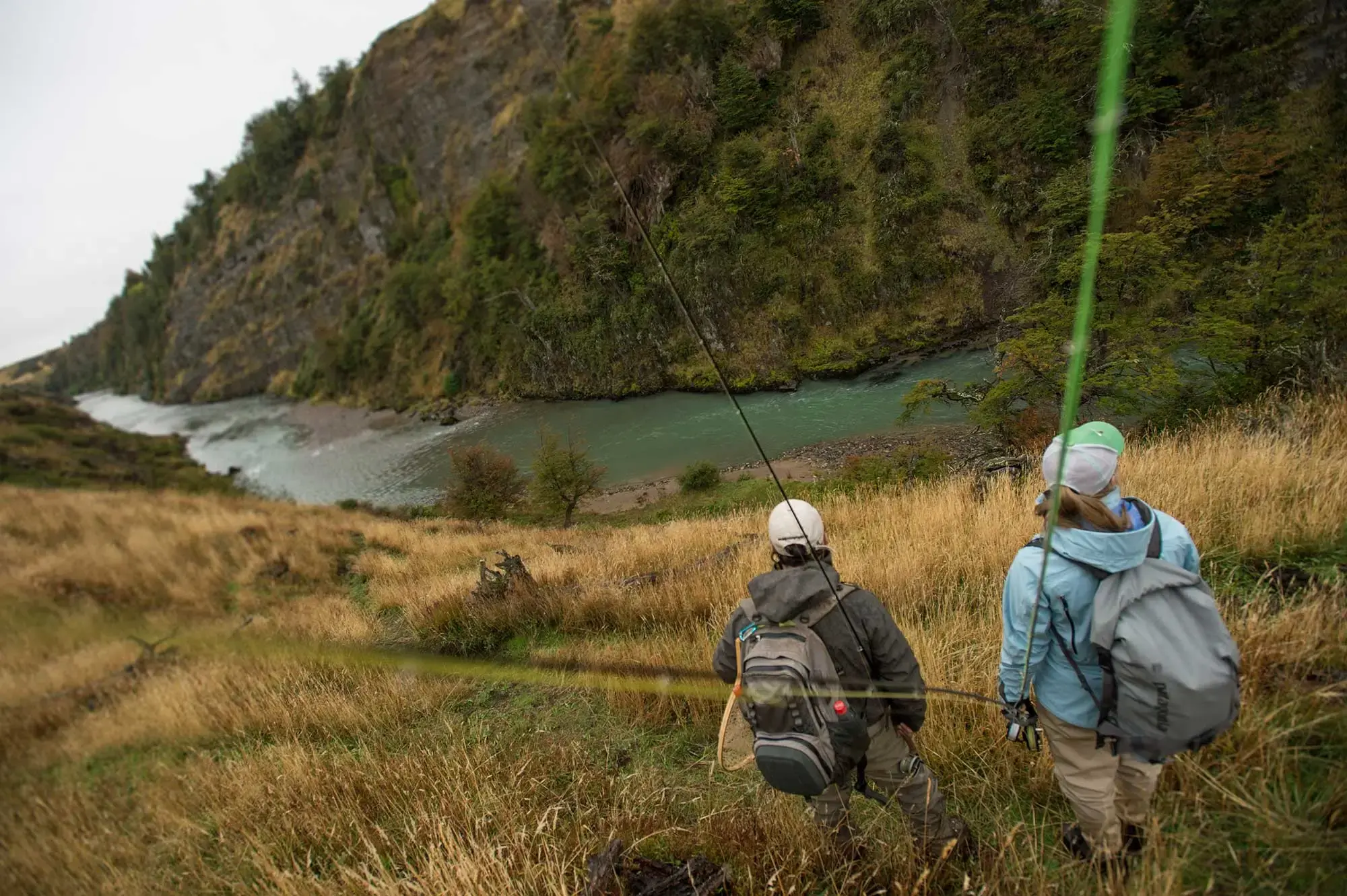Catching Giant Peacock Bass: Fifteen Tips

Catching Giant Peacock Bass: Fifteen Tips
After a decade of exploring the tannin-stained waters of the Rio Marié, we’ve fine-tuned our approach to catching the river’s legendary giants. Drawing from years of experience and understanding these waters intimately, here are 15 key tips to elevate your fly-fishing game for the giant peacock bass, based on my 12 years of experience at the Rio Marié in Brazil, known as the river of records for peacock bass.
Leave Light Leaders Behind
At the Rio Marié, light tackle just won’t hold up. The giants live in heavy structure and only 50-plus-pound fluorocarbon abrasion-resistant leaders will give you a fighting chance. These fish are powerful and relentless, so gear up accordingly to avoid losing the battle in seconds.
Change Up Your Retrieve
Peacock bass are known for their explosive strikes, but they can be unpredictable in their approach. Sometimes slow and deliberate strips, with pauses in between, will trigger them. Other times, a fast, aggressive retrieve does the job. Don’t be afraid to experiment throughout the day and adapt based on how the fish are reacting. Change is good.
Master the Power Strip Set
Peacock bass strike like no other. The moment you feel that hit, you need to respond with a strong, aggressive strip set–simply lifting your fly rod won’t do it. Years of experience have taught us that a near-violent strip is necessary to bury the hook deep enough to land these fish. Anything less, and you’ll likely miss out on that trophy fish.
Topwater Game with Consistency and Perseverance
Topwater fishing for peacock bass is an adrenaline rush, but it requires consistent effort. After casting your popper or slider, let the water settle. Keep your retrieves steady and keep casting. Often, the bigger fish need repeated presentations before committing to a strike, so perseverance is key.
Use Intermediate or Sinking Lines
While floating lines are effective for topwater action, don’t overlook the value of intermediate or sinking lines, especially when targeting fish in deeper water or along drop-offs. These lines help keep your fly in the strike zone longer and are perfect for fishing submerged structures where the biggest fish often hide. My top recommended fly Lines for giant peacocks: Scientific Anglers Amplitude Textured Tropical Jungle Titan (floating), Scientific Anglers Sonar Titan Tropical Jungle Clear Tip (intermediate sinking), Scientific Anglers Sonar Tropical Jungle Custom Tip (custom sinking).
Go Big with Flies–But Sometimes, Smaller is Better
Peacock bass are aggressive visual hunters, and they’re drawn to large, colorful streamers and poppers in the 6-8-inch range. Bright colors like yellow, red and orange tend to trigger their attention. In most cases, going big and bold is the way to go, as subtle flies don’t stand out in these waters. However, when peacock bass are nesting, it’s often better to slow down your retrieve and switch to smaller, heavier flies with a jigging action. These smaller flies tend to provoke the territorial instincts of big fish, making them more likely to strike.
Maintain Control During the Fight
The moment you hook a giant peacock bass, control becomes everything. They will try to use their massive strength to pull you into structure. You need to be assertive, applying pressure early and steering the fish away from obstacles. This is when a good drag system and proper line management are crucial.
Be Ready on the First Cast
On the Rio Marié, it’s not uncommon for the biggest fish to strike on the first cast into a new spot. Peacock bass are highly territorial, and the initial cast into their space can trigger an aggressive reaction. Always be prepared and focused as soon as your fly hits the water.
Sight Fishing for Giant Peacock Bass
When sight fishing for giant peacock bass, patience and attention to detail are key. There’s a good chance you’ll find them guarding their nests, where you’ll often see a pair–a male and female. They won’t be very spooky, but the first cast and how and where you place the fly in front of them is crucial. Another great way to see them is to look for a subtle sign: bubbles forming a circle, resembling a light rain on the surface, usually about 4-feet (1.5-meters) in diameter. A great tip for spotting these fry balls–schools of baby peacock bass–and where there’s always a big papa and big mama underneath them: arrive early in the morning when the water is calm and windless, providing a clear view of any movement on the water. Keep your eyes sharp and your casts accurate!
Trust Your Guides and Your Instincts
The guides on the Rio Marié know these waters intimately and will point you to the right spots. However, always trust your instincts as well. Combining local knowledge with your experience on the water will help you adapt quickly and improve your chances of landing a trophy fish.
Target Drop-offs at Key Times
The transition between shallow and deep water is often where big peacock bass patrol, especially early in the morning or late in the afternoon. These drop-offs create ambush points where the fish can easily strike, making them prime spots to focus your efforts during peak feeding times.
Focus on Transition Zones
Peacock bass love transition zones–places where the habitat changes, such as where fast-moving water meets a pool or where rocks meet sand. These areas concentrate baitfish and the peacock bass will follow. Casting along these zones increases your chances of finding actively feeding fish.
Keep a Backup Fly Rod Ready
The power of peacock bass can be brutal on gear. Having a backup rod rigged and ready is essential on the Rio Marié. When a fish breaks off or a reel fails (it can happen), you want to be back in the water within moments, not wasting precious fishing time re-rigging.
Fish the Extremes: Sun or Storms
Peacock bass thrive in extreme conditions. The scorching midday sun, though uncomfortable for anglers, is when these giants are often most active. Similarly, torrential rain storms can ignite a feeding frenzy. Whether the sun’s blazing or the rain is pouring, the extremes are often when the most action happens.
Fish the Early Afternoon Lulls
While midday is usually prime, there’s often a quiet period just after lunch when things can slow down. This is a perfect time to change tactics. Try deeper water or switch to sinking lines. The fish are still there, but they might be holding at different depths, and adjusting your approach can keep the action going.
We initially set out to share just ten tips, but as anyone who’s chased these incredible giants knows, peacock bass fishing is a never-ending learning experience. It takes a blend of technique, consistency and adaptability. So, we couldn’t help ourselves and decided to throw in five more. These additional tips, combined with the previous insights, will help you maximize your time on the water and increase your chances of landing that monster peacock bass.
Remember, this is a game that rewards persistence, preparation and attention to detail–each cast brings you closer to the fish of a lifetime.

Rodrigo Salles is the co-owner of Untamed Angling and a veteran fly-fishing explorer of the Amazon rainforest. Born in Brazil, he has spent his adult life exploring and fishing the jungle for dorado, peacock bass, payara, arapaima, as well as countless other species. He’s also a Flylab Pro and will be helping us with jungle fly-fishing insights.
.svg)








